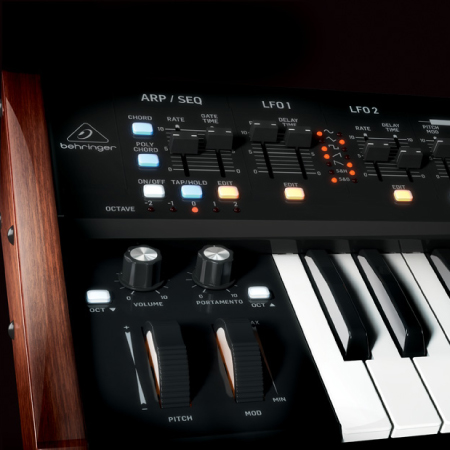


With the Sequential Prophet Rev 2, Dave Smith reimagines the modern classic Prophet ‘08. It won’t wow players with impeccable design and construction of a Moog, but its sounds will more than satisfy. But with the Deep Mind 12, the Germany-based electronic instrument maker created an analog polysynth with impressive depth. While the Minilogue XD is offered as only a keyboard, the Analog Four has both tabletop and keyboard formats.īehringer, which has busied itself with classic synth clones over the last few years, isn’t exactly known for breaking new ground. Each is a four-voice synth with onboard sequencers. This means there really is an option for everyone.įor those looking for their first analog polysynths, the Korg Minilogue XD and Elektron Analog Four are great options. Some are incredibly high end, like the Moog One, while others are much easier on the wallet such as the Korg Minilogue. The second wave of analog synthesis has brought a few more entries into the polyphonic analog synth category.

The Trilogy is both a polyphonic with both string and organ sections. Crumar’s Trilogy, in particular, is a fantastic synth. Other electronic music instrument makers like Oberheim and the underdog Italian company Crumar also put out some fantastic polyphonic analog synths in the late 1970s and early 1980s. Moog also produced an analog polysynth in the early 1980s-the Memorymoog. And some of these synths are easier to obtain than the others.ĭave Smith’s company Sequential Circuits was one of the first to create analog polysynths, and the company’s Prophet-5 is for many still the gold standard. The secondhand market for vintage analog polysynths is still going strong. Classic for a reason: sound great in any genre that needs polyphonic powerīy the early 1990s, the domination of digital synthesis meant iconic analog polysynths were criminally cheap.You can follow the development on the Baloran Facebook page or see if you can find out any more on their website. Laurent from Baloran says that they imagine it will be available by the end of 2017 and will be built to order in return for a wad of cash. It looks striking but somehow not lovely, although there’s plenty of time for refinement (or for me to get used to it!). There’s a bunch of sound examples on SoundCloud to give you a good idea of what it’s capable of. Baloran seem to have also built in their own analog TriChorus from their other products. The 5 octave Fatar keyboard supports both velocity and aftertouch. There’s an arpeggiator and a sequencer per voice. It says it’s 8 x multi-timbral which probably means that the 8 voices can be used by a single sound or up to 8 sounds on a single voice. A modulation matrix is there for the routing.
#Analog polyphonic synthesizers plus
There’s a ladder VCF, two LFOs and envelopes plus a global, digital LFO. VCO modulation is available via LF), pulse-width and FM. They’ve gone for a very vintage console look with the control panel angled up towards you above the keyboard. The Source was the very colourful blue, orange and yellow synth with membrane buttons from 1981. The emerging details are that it’s an 8 voice synthesizer with two VCO’s based upon those used in the Moog Source.


 0 kommentar(er)
0 kommentar(er)
